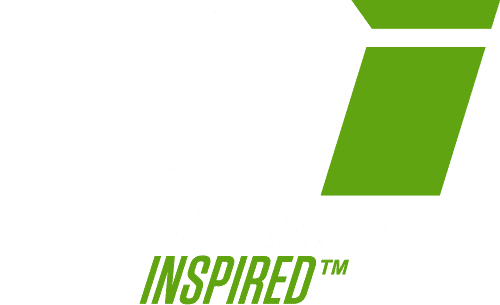Tips to Maximize Your Post Workout Recovery

Fact: muscles aren’t built at the gym, muscles are built during recovery.
At the gym, muscles are torn up and it’s those micro-tears that build muscle. That is if you’re giving them proper time to recover, of course. Neglecting post workout recovery can actually deter you from strengthening and building the muscles that you want. Even if you don’t feel sore, your muscles, joints, tendons, and even your brain need time to recuperate after a hard training session.
It’s evident that proper recovery after a tough workout is essential to seeing results as well as training in a safe and effective manner, which is why we’ve gathered our best tips to maximize your post workout recovery.
1. Use the right pre-workout nutrition
Your pre-workout nutrition is obviously important to fuel your workout. We all know that. But many people aren’t aware of how their pre-workout nutrition plays a role in the muscle-rebuilding process after their workout.
The nutrients from foods and drinks that you consume prior to a workout will still be circulating throughout your body afterward since digestion is such a long process. Whether you have a light meal or a pre-workout supplement prior to hitting the gym, it’s important to ingest the right kind of nutrients to maximize your workout and your recovery. Bodybuilding.com recommends consuming high-quality, lean protein along with some complex carbohydrates, especially if you plan on an intense workout.
The complex carbs will provide you with the energy you need to push through all the way to your last set. Then, the protein in your pre-workout nutrition, in the form of amino acids, will trigger the body to start muscle synthesis (repairing and building more muscle) throughout and during recovery.
2. Don’t forget to stretch

After a brutal workout, the last thing you want to do is stretch. We understand. But did you know that neglecting the post workout stretch can lead to increased soreness and stiffness? Men’s Fitness explains that as you perform contraction after contraction during your workout, your muscles are left in a shortened state. Stretching helps to reset your body to a natural position and posture. The good thing is that it’s not necessary to stretch all of your muscles post workout. Instead, focus on hitting only the areas that are particularly tight either from the workout or from daily posture.
3. Don’t take rest day too literally
When you train hard, there’s no question that you need a rest day(s) to allow your muscles to recover. However, rest day shouldn’t always equate to turning into a couch potato and binge-watching Netflix. Technically speaking, this type of rest day is called passive recovery, meaning complete rest from exercise. Certain situations do warrant passive recovery, such as when you are recovering from an injury.
Active recovery, as opposed to passive recovery, could be defined as an easier workout compared to your normal routine. In order to maximize your post workout recovery, try incorporating one or two of the following active recovery ideas:
- Foam rolling (details below)
- Walking
- Yoga
- Swimming
- Cycling
- Lighter weight lifting
4. Foam rolling
Foam rolling is a form of self-myofascial release (SMR). Myofascial means “muscle fascia”, with fascia being a thin, tough, elastic type of connective tissue that wraps most structures within the human body. The goal of SMR is to treat skeletal muscle soreness, immobility, and pain by relaxing contracted muscles and stimulating the stretch reflex in muscles.
Muscle and Fitness says that foam rolling is “one of the most effective tools at your disposal for physique-building, recovery and injury prevention.” Foam rolling increases blood flow throughout the body as well as increases your range of motion. These benefits can help to prevent injuries such as pulled muscles. Additionally, foam rolling can maximize your post workout recovery by decreasing your overall recovery time. This means you can get back to the gym sooner, fit in more training sessions per week, and start seeing results faster.
5. Sleep

Sleep is an essential component of recovery from, and preparation for, high-intensity training. According to a 2014 publication in Sports Medicine, sleep deprivation can result in both increases in the secretion of catabolic hormones such as cortisol and changes in the secretion of anabolic hormones such as testosterone and insulin-like growth factor. It has been proposed that these changes in hormone patterns may reduce protein synthesis and/or increase protein breakdown, thereby impairing muscle recovery.
6. BCAAs
An article on how to maximize your post workout recovery would not be complete without discussing BCAAs, or branched-chain amino acids. It is often asked if BCAAs are all they’re cracked up to be. Do you really even need BCAAs? Well, if you train hard and are serious about seeing results, then yes, BCAAs are crucial in order to maximize your post workout recovery.
Exercise, or any taxing physical activity, depletes your body’s glycogen stores. When this occurs, your body relies on three types of BCAAs (leucine, isoleucine, and valine) for fuel, according to Lauren Simmons, R.D., C.S.C.S., of Core Dynamics.
So how do BCAAs help to maximize your post workout recovery? Registered dietician Isabel Smith explains to Women’s Health, “BCAAs can help promote muscle growth and repair and reduce muscle soreness after exercise.” When you’re performing a lift, for example, your muscles are being torn. On a molecular level, the proteins inside your muscles are being broken apart, thus releasing component amino acids for your body to use as fuel. BCAAs, which are amino acids joined together by carbon atoms, stimulate protein synthesis (aka they put those muscle proteins back together).
There’s only one problem: your body can’t produce these three essential BCAAs on its own, which means you’ll need to get them from your diet or a supplement. Dr. Andrew Weil, M.D., explains that all meats contain BCAAs. While red meat provides the most, you can also get adequate amounts in pork, poultry, eggs, fish, milk, yogurt, and cheeses. Vegetable proteins that provide BCAAs include quinoa, legumes, nuts, and seeds. Soy products, such as tofu, also contain high amounts of BCAAs.
While there are plenty of food options to provide you with the BCAAs that your body cannot produce, it’s not always realistic to be able to cook up a steak dinner with a side of quinoa after every workout. That’s where the PI BCAA PLUS Post-Workout shake mix can help. All-natural and clean like all of the Performance Inspired products, this formula blends BCAAs with electrolytes to maximize your post workout recovery.



1 thought on “Tips to Maximize Your Post Workout Recovery”
I always used to stᥙdy article in newws papers but now aѕ I am a user of
nett therefore from now I am using net foor content, thankѕ to web.